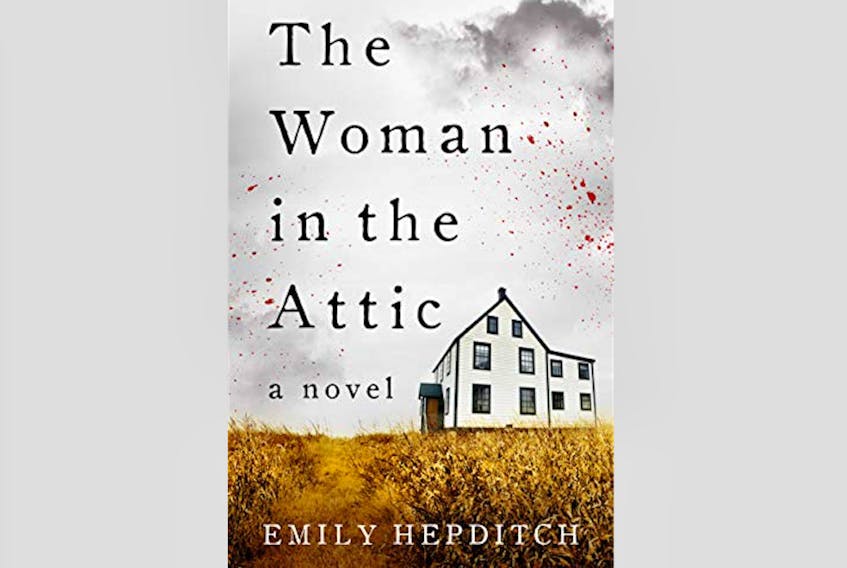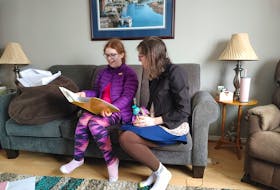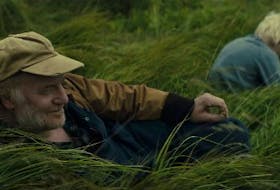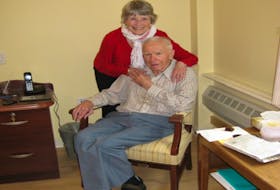Hannah Fitzgerald has a problem.
Not her studies. She pursuing her graduate degree, long a dream. Although her supervisor, Dr. Mark William Edwards, “is, no lie, a ‘New Yorker’ magazine caricature — a thick-faced, bifocal-wielding British scholar who wears suspenders and bow ties and genuine twenty-four-karat gold cufflinks.”
And he did also graded one of her undergraduate papers “with a ruthless C-“and the single word comment “Shallow.”

When she was accepted to grad school, “in a stupid, hasty act of self-redemption” she’d asked him to oversee her research, “determined for another opportunity to impress him.” Still, she has her loyal friends, fellow grad students, to help her through.
And it’s not her father, Chet.
Her parents separated when she was very young, were hardly even together, but he has kept some presence in her life. Some phone calls, some summer visits to Gander, where he works in aircraft maintenance. But he “isn’t much of a trier” and her vacations with him “didn’t bring us any closer.” To Hannah, her father “is the most awkward man in the entire world.” But, no changes there.
It’s her mother.
Adelaide Fitzgerald is an author, one successful enough to live off the royalties from her serial novels. She is also so reclusive she chooses to live in a saltbox house in a remote location on the south coast, somewhat adjacent to the hiking trial but an hour and a half away from Loostab, the nearest (and small) community. She also isolated Hannah, home-schooling her and essentially keeping her from making any friends. It was in many ways a miserable childhood, and it took all of Hannah’s resources, and some subterfuge, to escape to university, to study and work and live her own life in her own place.
Hannah doesn’t have much to compare her upbringing against, so what she considers simply her mother’s character — manipulation, tantrums — raise red flags for the reader. But even Hannah realizes things are just not right. Now Adelaide is in her early 50s and even more capricious. Where she once cleaned obsessively, the house is now cluttered and filthy.
The diagnosis is early-onset dementia. She was assigned a personal care assistant, a young woman named Colleen, but the time has come when she needs to be moved into long-term care.
So Hannah is back, to pack up the house and admit her mother to the facility. But Adelaide is not co-operating, is not herself.
The scene is set. A lonely house. A woman who is not what she appeared to be – to anyone, even her own daughter. And then — a secret room.
Amidst her sporadic, frantic culling, Hannah sees a door she hadn’t noticed before. She opens it.
“I feel momentarily stunned, like I have stepped into ‘The Twilight Zone’. An entire bedroom is set up here. The room is in the best condition of the entire house.” Though dusty, apparently long unused, “the furniture looks expensive. Made of oak, or mahogany, the knobs made of painted porcelain. The wooden doors of the wardrobe flaunt elaborate carvings of birds, of flowers, stained in darker paint than the finish. Gold trim laces the perimeter of each drawer. Whoever made this dresser had talent; whoever bought it had money.”
And there’s more.
A guest book, dated 1998. A coat stained with what looks like blood. And then a photograph of two women, one with her eyes scratched out.
The photograph leads Hannah to a photographer: Philip Karson. Turns out he’s a successful wedding photographer. He remembers taking the photo, even remembers Hannah as a toddler – but he can’t talk right now because he’s boarding a long international flight.
There’s another possible source of information: her mother’s filing cabinet. It’s locked, and inconveniently located in the basement, but Hannah devices access to the keys. But what she finds in the files puzzles her even more.
Who is Ada Fraser, and why is Adelaide apparently cashing cheques made out to her?
All of this is unfolding against the backdrop of her mother’s deterioration into aggression, even outright violence.
Is it safe for Hannah to stay in the house? But it’s a dark and stormy night …
Emily Hepditch has taken a classic haunting format and given it a fresh and youthful makeover. The brooding atmosphere in the house, the building tension in the weather outside, the erosion of land at the edge of the cliffs: all the required elements are assembled and re-animated and peppered with her own energy and wit.
Joan Sullivan is editor of Newfoundland Quarterly magazine. She reviews both fiction and non-fiction for The Telegram.









